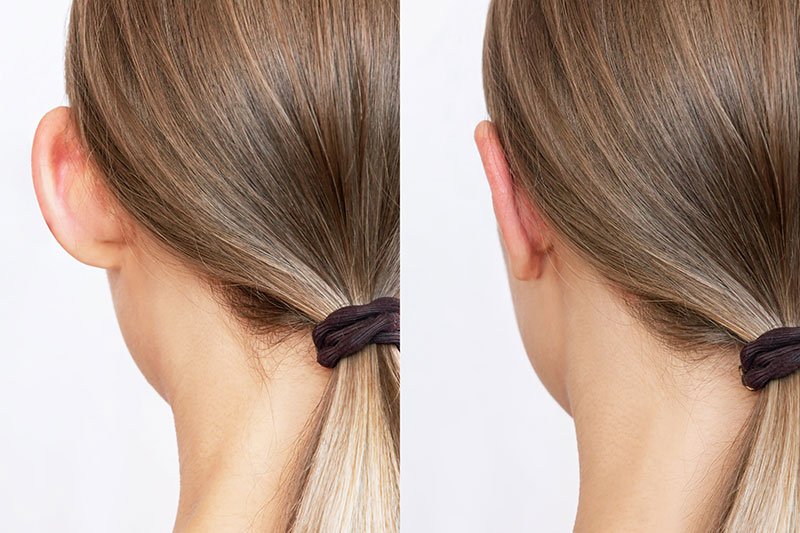Otoplasty: Ear Correction Surgery
Because the size and shape of your ears affect your appearance more than your hearing.
Genetics can determine a galore of physical and mental traits, ranging from BMI to IQ. It may also affect your ear size and shape – as a matter of fact, 5% of people have ear deformities.
Common concerns include protruding or prominent ears, where they extend more than 2cm from the side of the head – some people who feel this creates an unattractive side profile end up feeling distressed.

Otoplasty doesn’t make you hear better - but it can make you feel better about yourself
Basically, otoplasty is a surgical procedure to correct structural ear abnormalities. It is performed on the auricle, which is the visible portion of the outer ear. The auricle comprises folds of cartilage covered in skin. If it does not develop properly, it could affect the size, positioning or shape of your ears.
Otoplasty can:
1/ Make your ears look more balanced by correcting asymmetry or protrusion
2/ Positively impact your confidence and quality of life by reducing feelings of self-consciousness resulting from ear deformities
3/ Offer permanent results, and is a safe procedure when performed by a qualified and experienced surgeon, with a relatively smooth recovery
Different otoplasty procedures addresses different concerns:
- Ear augmentation, to increase the size of your outer ear.
- Ear pinning, to draw your ear closer to your head.
- Ear reduction, to decrease the size of your ear.

How otoplasty is performed
It takes about 1 to 3 hours to perform otoplasty, and it is often an outpatient procedure. General or local anaesthetic may be given. It involves the following:
- An incision is made on the back or inside the folds of the ear.
- Excess cartilage or skin is removed or remodelled, either by grafting or stitching.
- The incision is closed with stitches.
Results of otoplasty are noticeable immediately
But it will take several weeks or months post-surgery for final results to show.
Along the way, be prepared to observe some swelling and bruising. You may have to wear a special headband or bandage to help reduce swelling and bruising and improve healing – this can last a few weeks.
Scarring will occur, although minimal and not visible since incisions are usually made behind the ear. Over time, these scars will fade and become less noticeable.
Within 3 to 6 months, you can observe the final results of otoplasty. Swelling should have subsided and ears should have healed fully.
While the results of otoplasty can last a long time, know that the appearance of your ears can still change due to the natural ageing process.

